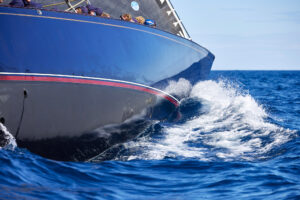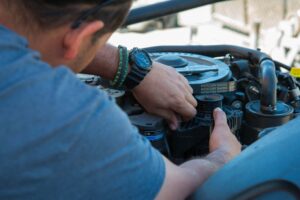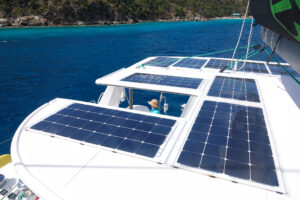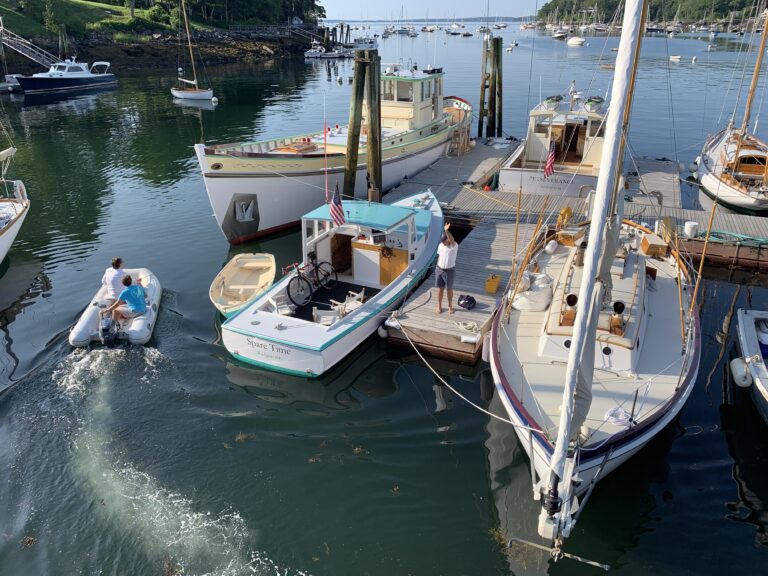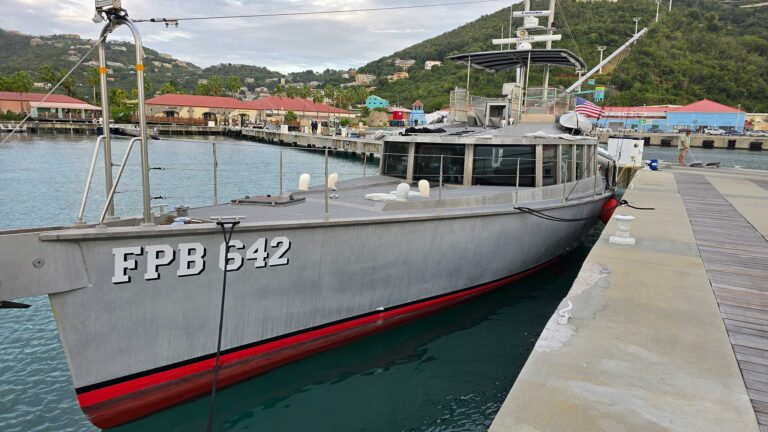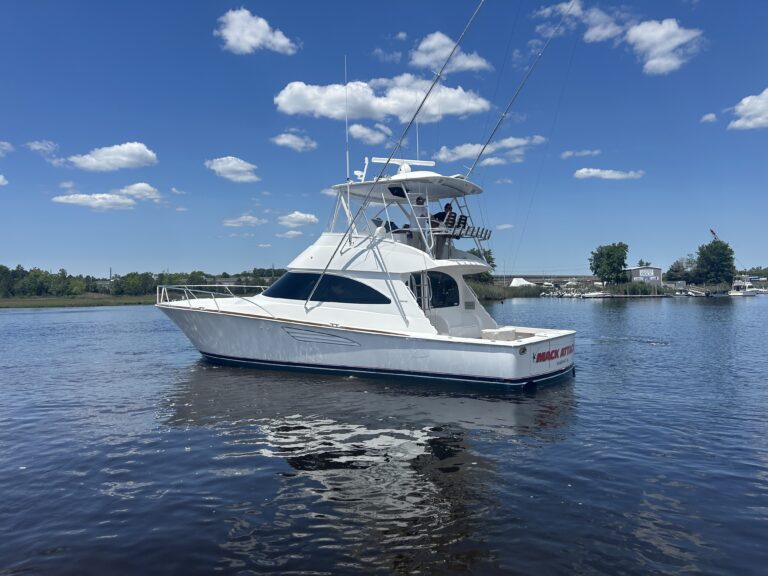Fall decommissioning, also referred to as winterizing, is essential for any vessel facing subfreezing temperatures during the winter months. While caring for your boat is important year-round, proper winter decommissioning is the single most crucial maintenance step you can take. Neglecting it can lead to significant, costly damage, potentially keeping your boat out of commission for the next season.
Winterizing involves several key steps, which are outlined here. Each process plays a vital role in proper winterization, so it’s important to understand how to complete them and thus ensure your boat is ready for the colder months ahead.
GENERAL CLEANING & EQUIPMENT REMOVAL
It is important to start the process by cleaning both the exterior and interior of your boat. Although simple and straightforward work, making the boat as clean and orderly as possible is an important step to get it through the winter without problems.
Start on the outside as soon as your boat is removed from the water. It’s important to clean the boat’s bottom, removing any growth that may have accumulated during the season. Many marinas provide power washing services, which are highly recommended as it becomes significantly more difficult to remove bottom growth once it has a chance to dry.
Inside the boat, remove all equipment, including life jackets, cushions, pillows, and personal belongings, and store them in a dry, warm place. This will not only give you better access to decommission the rest of the boat, it will also help prevent mold, a common issue during winter storage.
FUEL CARE
You have to care for your fuel if you want your boat to run correctly in the spring. Start by making sure that fuel tanks are filled, as partially empty tanks can form condensation on the tank walls during the winter months, which will contaminate your fuel supply. To avoid this, keep the tanks at least 75 percent filled, and preferably fuller.
After filling the tanks, add the appropriate fuel stabilizer to gasoline or diesel. Be sure to use the correct amount based on your tank size by following the product instructions. It’s essential to use a stabilizer specific to your fuel type, as gasoline and diesel stabilizers have different chemical compositions and functions. Gasoline stabilizers prevent fuel from gumming up in the engine system, displace water to prevent rust, and stop the separation of ethanol in your gasoline. Products like Sta-Bil work with both ethanol and non-ethanol fuels and remain effective for about two years.
Diesel stabilizers are crucial for preventing bacterial growth by using biocides, partitioning water from diesel, and providing added lubrication to internal engine components. Without stabilizers, bacterial growth can lead to sludge, which clogs fuel filters and hampers engine performance. If this happens, you can end up with a severe case of sludge and you may have to polish the fuel, which is an expensive and time-consuming process.
BOAT DRAINAGE
Stagnant water left onboard is notorious for causing black mold. It is not something you want to deal with when you’re getting your boat ready in the spring. To prevent this, make sure all stagnant water is removed from lockers, bilges, and live wells. If your boat has a garboard or drain plug, be sure to remove it to allow any remaining bilge water to fully drain.
If the bilge is dirty, this is a great time to flush it with freshwater and clear out any debris. Be sure to inspect the bilge for areas where water might not drain properly and use a sponge and bucket to remove any standing water. Tip: During winterization, it’s good practice to add any leftover antifreeze to the bilge to help prevent the pumps from freezing over the winter months.
WATER SYSTEMS
With freezing temperatures comes freezing water, so proper drainage and antifreeze flushing is required to prevent any surprises come springtime.
Begin by draining all water from your boat’s water system, including the freshwater tank, pipes, and hot-water heater. Open all the faucets on the boat and let them run until no more water flows. Be sure to open the hot-water heater valve to ensure it drains completely.
If your boat doesn’t have a bypass kit installed, now is the time to add one. A bypass kit typically includes hoses and valves that reroute antifreeze around the heater rather than through it. Close the inlet and outlet valves on the hot water heater and open the bypass valve to allow antifreeze to flow around the heater.
To prevent the heating element from burning out if the boat is plugged in before the water system is refilled, lock out the hot water heater breaker at the electrical panel or disconnect the leads at the heater. Bypassing the hot water heater during winterization keeps antifreeze out of the unit, preventing waste and saving you the hassle of flushing it out in the spring. This ensures the antifreeze only goes where it’s needed, conserving both time and money.
Next, add antifreeze. Pour marine-grade, non-toxic antifreeze (we recommend -50°F “pink” antifreeze) into the freshwater tank(s). The amount you’ll need depends on the size of your boat and the length of its plumbing system, so it’s best to have extra on hand. Turn on the water pump and open the faucets one by one, starting with the one furthest from the tank. After the water tanks are drained, an airlock may form in the water pump or water filter. If this happens, disconnect the pump’s output side and run antifreeze into the unit. If your boat has a filtration system, loosen the filter housing while the pump is running to remove any airlocks.
Once antifreeze flows from a faucet, that section of plumbing is protected. Close the faucet and move to the next one. Since the hot water heater is bypassed, both hot and cold taps will pull antifreeze from the tank, so be sure you switch each faucet from cold to hot to ensure both sides are flushed with antifreeze.
If your boat has multiple freshwater tanks, repeat the process from the tank manifold to winterize each one individually. If your boat includes other systems, such as a raw-water washdown, livewell, ice maker, air conditioners, or shower sumps, be sure to winterize these as well.
HEAD/HOLDING TANK
Before leaving the marina or mooring, ensure the holding tank is completely pumped out. Leaving it full or partially full over the winter can cause tank or plumbing failures, potentially leading to severe damage.
If you have a raw-water flush system, close the seacock after the boat is out of the water to allow any remaining seawater to drain from the plumbing. Next is the head flush. Disconnect the raw water intake hose from the seacock and place it into a bucket filled with -50°F antifreeze. Pump the head several times until the antifreeze fully replaces the seawater. This step is crucial to protect the internal components of the head from freezing.
After winterizing the head, it’s important to winterize the holding tank. Add a gallon of -100°F antifreeze into the pump-out deck fitting. The antifreeze will mix with any remaining liquid in the holding tank and prevent freezing failures in the system.
BATTERY CARE
For lead-acid batteries, it’s recommended to fully charge them before winterizing your boat. If you have flooded lead-acid batteries, check the electrolyte levels before the final charge, and top off the cells with distilled water if necessary.
Are you leaving batteries on the boat? If so, after charging, disconnect the negative terminals to prevent parasitic drain. For boats with multiple negative leads, zip-tie them together to avoid confusion during reinstallation in the spring.
If you’re removing batteries, avoid keeping a charger connected all winter. Instead, charge the batteries no more than once a month. Also, avoid storing batteries on concrete, as temperature differences can cause electrolyte stratification. For lithium batteries, it’s best to leave them at a partial charge, typically around 50 percent.
ENGINES
The process of winterizing your boat’s engine is a topic that requires a separate article, as there are many differences between inboards, outboards, and diesel engines. But in short, the important steps include changing all oil, flushing the motor with antifreeze, and on gasoline engines—fogging the motor if the manufacturer recommends it.
Decommissioning is an important step in boat maintenance, and if you take the time to do it properly, it will pay off in the long run and get you on the water quicker come spring. Decommissioning is an important process for the overall longevity and maintenance of your boat. If you feel uncomfortable performing these tasks on your own, we highly recommend contacting a marine professional.
Mike Garretson owns Sea & Land Yacht Works in Wakefield, Rhode Island. This article was originally published in the November 2024 issue.


